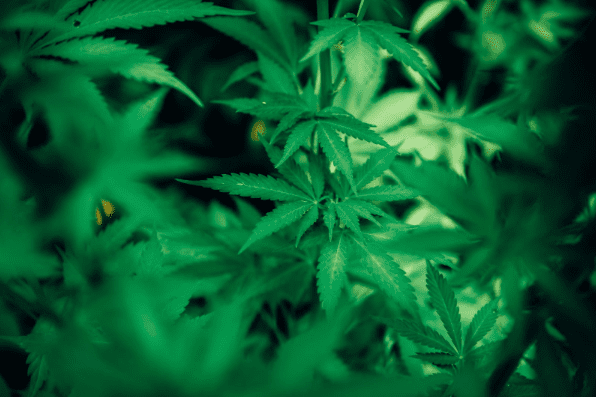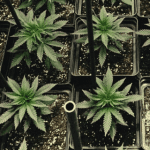Cannabis is being legalized in more and more regions across the United States. This means that residents in some states can grow their own plants for personal use. But before you start thinking about how to get a cultivation license in New York, let us start from the basics. While cannabis is a relatively hardy plant that is easy to grow, it takes patience and dedication to produce the best yield possible. Before you start growing cannabis, it’s important to choose the right seeds. Find a trustworthy seed shop, such as Zamnesia, and select the cannabis seeds that meet your desired goals. Once you have the seeds, you can then plan your grow strategy. Here are some tips for getting started with cannabis cultivation.
Seed vs. Clone
Sexual propagation, in which seeds are used as a source of new plants, is widely regarded as the most successful strategy for growing cannabis outdoors. There is a greater potential yield and plants grown from seed are generally more resistant to pests, diseases, and other environmental stresses. However, growing cannabis plants from seeds can result in too much variety in the phenotypes, possibly making the product inconsistent and thus undesirable. If you wish to explore many different flavors and aromas, growing from seeds will provide you with a good range of plants.
Asexual propagation involves taking cuttings from a parent plant and growing them until they root and form a clone. When grown in identical conditions, a clone is much more likely than a plant grown from seed to display the same phenotype and cannabinoid and terpene profile as its parent when grown in identical conditions. It will also inherit any disease-resistant properties of its parent and start producing earlier than plants grown from seed. If you wish to only grow one type of strain in a strictly controlled environment, clones are a better choice for you.
Soil vs. Hydroponics vs. Aeroponics
Whether it is from a clone or a seed, every plant requires a medium to thrive. In most cases, soil is used to cultivate cannabis. Plants can be grown in soil either indoors or outdoors. Soil in good condition retains water for long periods of time and is accessible and simple to work with. A healthy, organic soil mix that is not overloaded with additives (fertilizers) is ideal. Although cannabis plants enjoy plenty of water, proper soil drainage is essential to prevent moisture-related problems.
Since soil can be messy, most indoor growers use hydroponics, in which plant roots are fed a nutrient-rich liquid solution. Popular hydroponic media include perlite, vermiculite, coco coir, and hydroton balls, all of which promote efficient nutrient uptake with much less water use than soil. The extensive care and focus on detail that hydroponics demands is its primary drawback. It is important to keep a close eye on heat levels as well as the pH and nutrient levels of the water.
Instead of keeping the plant’s roots submerged in water, an aeroponic system suspends them in a moist air environment where they can absorb water, nutrients, and oxygen. Although aeroponic systems may theoretically produce the largest yields, they are also the most finicky to set up and maintain. A properly functioning aeroponic system requires constant, vigilant attention to both environmental conditions and possible equipment failures that can result in large losses.
Training Methods
Although home growers are likely to only have a few plants, commercial growers need to make the most of their growing space by utilizing training methods that train the plants to grow in the desired shape or produce in a certain way. There are numerous training techniques depending on what you are hoping to achieve.
For instance, the Sea of Green (SOG) technique involves growing several small plants to promote the development of a large, dense central bud. Meanwhile, the Screen of Green (SCROG) method uses a wire screen to restrict the vertical grow of plants, forcing them to expand horizontally. This results in colas developing in areas of the stem that would normally be dormant, thus increasing yield
Light Cycles
If you are growing cannabis plants outside, the gradual reduction in daylight hours over the course of late summer and fall will trigger flowering. Indoors, 18 hours of light per day is recommended to keep the plants growing tall and bushy during the vegetative stage. Once your plants have reached your desired height, they will need to be transitioned into the flowering stage. During this phase, the female plants produce colas coated in trichomes, and male plants produce and release pollen. To stimulate flowering, you need to reduce your indoor lighting to 12 hours per day.
Harvesting
When the glands atop the trichomes of a female plant change from clear to milky white, the plant is ready to be harvested. The trichomes are at their most fragile right before harvest. For the best results, cut the whole plant or the large branches off carefully and hang them upside down to dry for three to seven days. Once the flowers are completely dry, you can trim off the excess sugar leaves surrounding the buds. Curing is the final stage where the dried flowers undergo a chemical transformation to help them retain their flavor and maximize their potency.
Growing your own cannabis can be a highly rewarding and satisfying process. Doing your research before you start growing will help you avoid common mistakes and ensure that you get the best possible results. With the right knowledge and methods, you can reap delicious, high-quality buds that you can enjoy and share with others.






